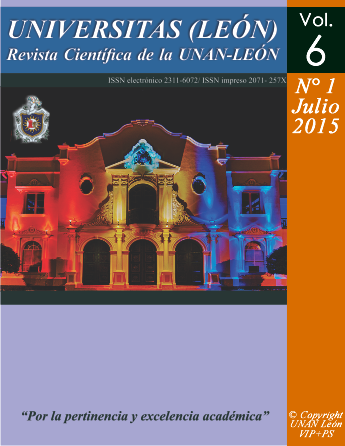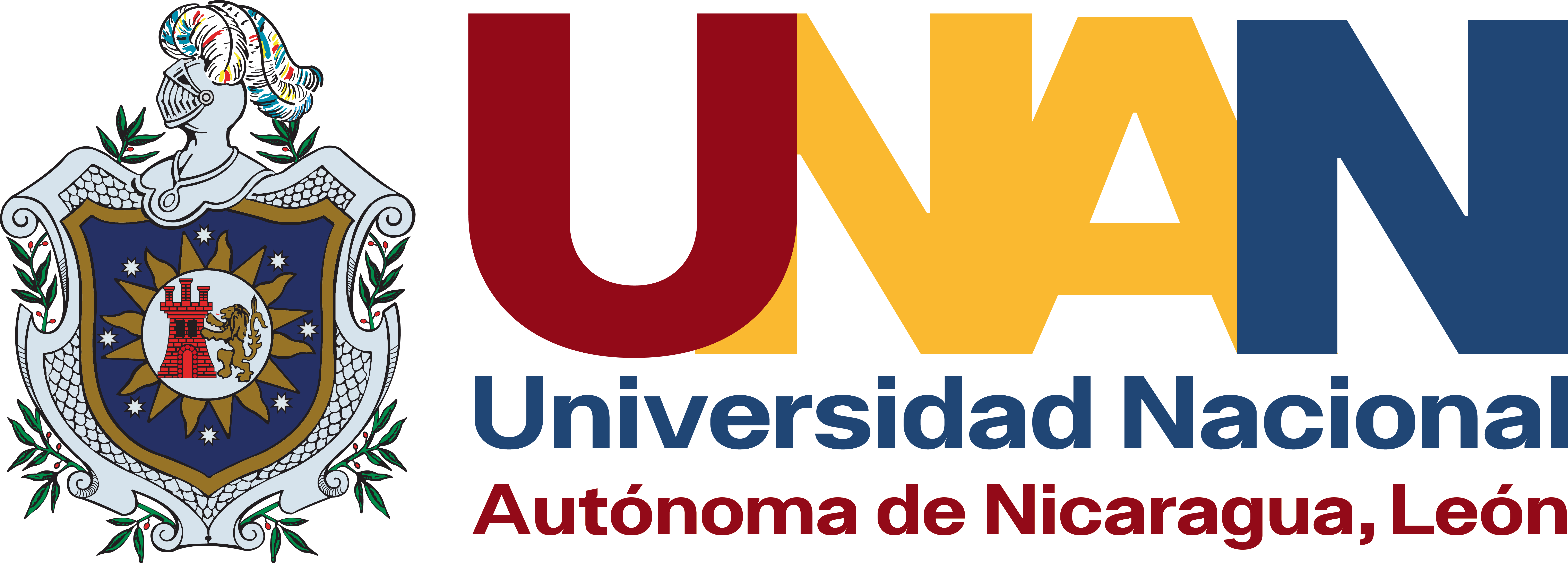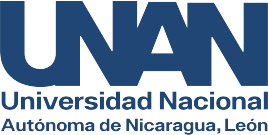Response of the floc in the growth of juvenile white shrimp litopenaeus vannamei under experimental conditions: commercial diet with floc vs commercial diet without floc in semi-intensive production system
DOI:
https://doi.org/10.5377/universitas.v6i1.13694Keywords:
Floc, Juvenile shrimp farmingAbstract
Target. To determine the effect of floc on the growth of juvenile white shrimp Litopenaeus vannamei under experimental conditions: commercial diet with floc vs. commercial diet without floc in a semi-intensive production system. Materials and methods. To determine which treatment presented the greatest growth, physical-chemical factors (dissolved oxygen, temperature, salinity and pH) and population parameters (Accumulated Growth, Growth Rate, Growth Rate, Feed Conversion Factor, Survival and Productive Yield) were taken. ). These data were collected in 27 days where the juvenile Litopenaeus vannamei shrimp had an initial weight of 1.5 g in both treatments. Results. According to the results, the following is presented: the treatment with floc acquired a final growth of 5.3 gr, obtaining an average of 3.8 gr, while the treatment without floc reached a final growth of 4.6 gr, obtaining an average of 3.1 gr. . Conclution. The treatment with floc gained more biomass due to the protein complement of the floc in the commercial diet, while the treatment without floc gained little biomass since they only had the protein from the commercial feed; When using statistical analysis, it was found that p>0.05 supported that growth is greater when floc is added to the feed.
Downloads
References
Alba-Tercedor, J. (1996). Macroinvertebrados acuáticos y calidad de las aguas de los ríos.IV Simposio del Agua en Andalucía (SIAGA) España. Vol. II: 203-pp.213. Disponible en: http://www.ephemeroptera-galactica.com/pubs/ pub_a/pubalbaj1996p203.pdf
Avnimelech, Y. 2012. Biofloctechnology a practical guide book. World Aquaculture Society, Baton Rouge, LA, pp.48. Disponible en: http://cdn.intechopen.com/pdfs-wm/44409.pdf
Barreto, F. 2003. Crecimiento de camarones Litopenaeus Vannamei asociado a factores de manejo. León 2003.pp. 2. Disponible en: https://www.google.com.ni/?gws_rd=ssl#q=Barreto%2C+F.+2003.+Crecimiento+de+ca marones+Litopenaeus+Vannamei+asociado+a+factores+de+manejo.+Le%C3%
B3n+2003.pp.+2
Craig, S., Helfrich, LA, 2002. Entender Fish Nutrition, Piensos y Alimentación (Publication420-256). Virginia Cooperative Extension, Yorktown (Virginia). pp.4. Disponible en: http://www.sciencedirect.com/science/article/ pii/0304380085900018
De Schryver. P, Verstraete, W. 2007.Nitrogen removal from aquaculture pond water by heterotrophic nitrogen assimilation in lab-scale sequencing batch reactors. Biores Technol.Laboratory of Microbial Ecology and Techno- logy, Ghent University, Ghent, Bélgica.100.pp.1162-1167. Disponible en : http://www.sciencedirect.com/ science/article/pii/S0960852408007608.https://doi.org/10.1016/j.biortech.2008.08.043
FAO. 2014. Code of Conduct for Responsible Fisheries. FAO, Rome, Italy.pp. 41. Disponible en: http://www.fao.org/fi- shery/culturedspecies/Mugil_cephalus/es
Herrera C. 2012. Factores físicos y químicos del agua de los estanques camaroneros. Nicaragua.pp.11. Disponible en: http://web.uned.ac.cr/biocenosis/images/stories/art%C3%ADculos%20Vol27/13w-Corona-Contaminacion-VF.pdf
Martínez E. 1998. Aspectos fisiológicos de los camarones.UNAN-León,Nicaragua.Disponibleen:https://www.google.com.ni/webhp?hl=es&tab=ii&ei=DZZxVKiaCsOxggTshIHYDA&ved=0CA0Q1S4#hl=es&q=8.%09
Mart%C3%ADnez+E.+1998.+Aspectos+fisiol%C3%B3gicos+de+los+camarones.+UNAN-Le%C3% 3n%2C+Nicaragua.
Martínez E. 2006. Proyecto de producción de camarones en estanques de concreto, las peñitas-león. Unan - León, Nicaragua. Disponible en : https://www.google.com.ni/webhp?hl=es&tab=ii&ei= DZZxVKiaCsOggTshIHYDA&ved=0CA0Q1S4#hl=es&q=9.%09Mart%C3%ADnez
+E.+2006.+Proyecto+de+producci%C3%B3n+de+camarones+en+estanques+de
+concreto%2C+las+pe%C3%B1itas-le%C3%B3n.+U nan+%E2%80%93+Le%C3%B3n%2C+Nicaragua.
Martínez E. 2011, Comunicación personal, Nicaragua.merguiensisde Man, Penaeus japonicus Bate, Penaeus aztecus Ives, Metapenaeus ensisde Haan and Penaeus semisulcatusde Haan. In: Avault W, Miller R, editors. Disponible en: http://www.sciencedirect.com/science/article/pii/0044848685901875
Martínez 2012, Crecimiento de camarones marinos Litopenaeus vannamei en estanques de concreto. Laboratorio de Investigaciones Marinas y Acuicolas (LIMA- UNAN - León). Nicaragua. Disponible en: https://www.google.com. ni/webhphl=es&tab=ii&ei=DZZxVKiaCsOxggTshIHYDA&ved=0CA0Q1S4#hl=
es&q=11.%09Mart%C3%AD nez+2012%2C+Crecimiento+de+camarones+marinos+Litopenaeus+vannamei
+en+estanques+de+concreto.+La boratorio+de+Investigaciones+Marinas+y+Acuicolas+(LIMA-+UNAN+-+Le%C3%B3n).+Nicaragua.
Downloads
Published
How to Cite
Issue
Section
License
Copyright (c) 2015 UNIVERSITAS (LEÓN): SCIENTIFIC JOURNAL OF THE UNAN-LEÓN

This work is licensed under a Creative Commons Attribution-NonCommercial-ShareAlike 4.0 International License.
Copyright © 2025 Universitas (León), Revista Cientifíca de la UNAN-León. Academic Direction. Research Department. Publication and Scientific Event Unit.










